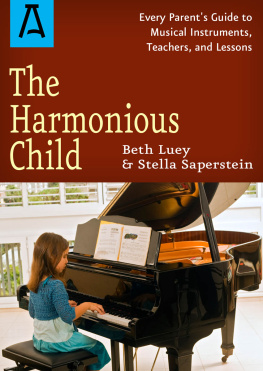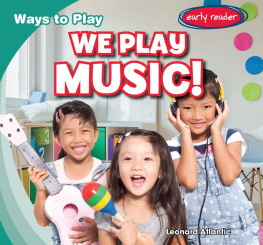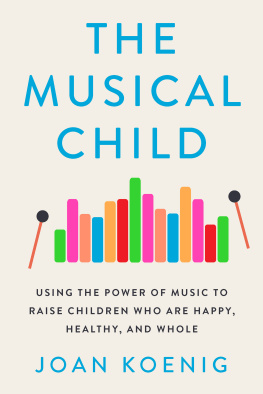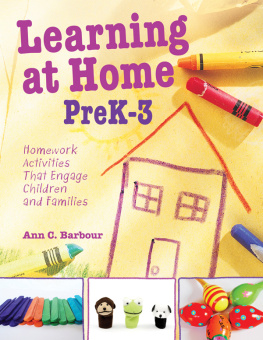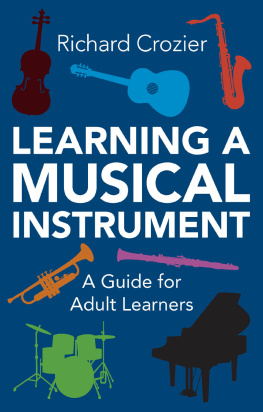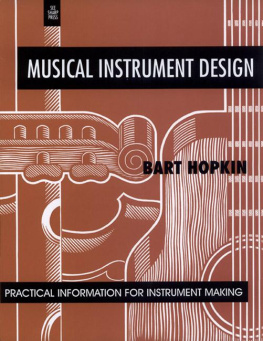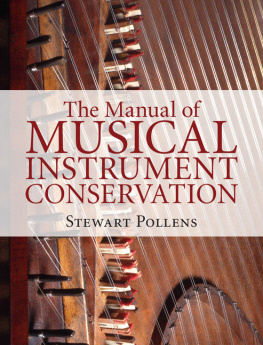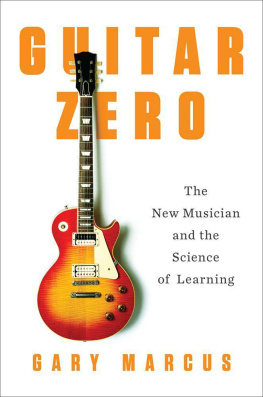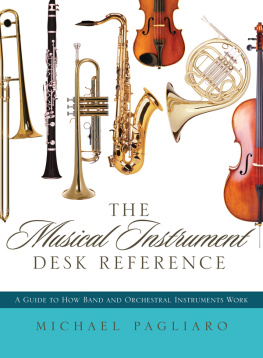

Library of Congress Cataloging-in-Publication Data
Stein Crease, Stephanie.
Music lessons : guide your child to play a musical instrument (and enjoy it!) / by Stephanie Stein Crease. 1st ed.
p. cm.
Includes bibliographical references (p. ) and index.
ISBN-13: 978-1-55652-604-6
ISBN-10: 1-55652-604-0
1. Musical instrument selection for children. 2. MusicInstruction and study. I. Title.
MT740.S74 2006
784.193085dc22
2006006752
Cover and interior design: Sarah Olson
Cover photo: David Sacks, Image Bank/Getty Images
Photo credits: on , photos courtesy of InterSchool Orchestras of New York. All rights reserved.
2006 by Stephanie Stein Crease
All rights reserved
First edition
Published by Chicago Review Press, Incorporated
814 North Franklin Street
Chicago, Illinois 60610
ISBN-13: 978-1-55652-604-6
ISBN-10: 1-55652-604-0
Printed in the United States of America
5 4 3 2 1
To R.P.C.
ever attuned to the sounds of surprise
Contents

Acknowledgments
J ust as it may take a village to raise a child, writing a book such as this also takes a village.
I would like to extend my deepest gratitude to senior editor Yuval Taylor, who remained patient, enthusiastic, and insightful through the entire process of completing this book. Also, very special thanks to my agent Susan Ramer, who confidently and patiently helped me follow through with this project. My sincere thanks also goes to Lisa Rosenthal, editor, and Gerilee Hundt, managing editor, Allison Felus, and the entire editorial, design, and production staff at Chicago Review Press, who carefully guided this book into print.
I would like to especially acknowledge those who read the manuscript in its entirety or portions thereof: Kathy Allen, Robert Crease, Emily King, Karen Oberlin, and Eve Weiss.
There are many other peoplechildren and adultswho helped contribute to this book in ways large and small. Very special thanks to the entire staff of the InterSchool Orchestras of New York, especially Annabelle Prager, founder; Ann McKinney, director; Ellen Brofman, education director; Robert Johnson, conductor; and all the children and families of the Morningside and Carnegie Hill Orchestras.
My profound gratitude also goes to the following individuals, families, and organizations: Sam Amidon; Peter Amidon; Johnella and Khalil Blassingame; Erich Bachrach, director, Community Music School of Springfield (Massachusetts); Andrew Brito and Marisol Cuevas; David Carleton and Shelley Greenberg, Turtle Bay Music School; Naomi Cohen; Brenda Dillon; Anne Farber and Cynthia Lilley, Dalcroze School at Lucy Moses; Barry Goldberg, executive director of the New York Youth Symphony; Chris Jenkins; Larry Malin; Ariel and Shelley Mitnick; Paula Robison; Linda Rainwater; Ann Roberts; Lydia Ross; Tamara Litt and the Litt Family; Felice Swados; Jonathan Russell and his family; Jo Shifter, North Shore Suzuki, Stony Brook, New York; and Mizuho and Yoshie Yoshimune.
Lastly, I would like to thank my son Alexander Crease, whose joyful noise and music making inspired this book, my extension child India Schneider-Crease, and my husband Robert P. Creasephilosopher, writer, and historian. This project would not have come to pass without his care and support, his insight, goodwill, and great sense of humorthrough thick and thin.
Introduction
L ast spring, I attended the annual talent show at my sons elementary school in New York City. The majority of the fifty or so acts consisted of children lip-synching to their favorite songs. Or, more likely, to their parents favorite songs. There were a lot of Beatles songs, for instanceand the opening act was a kindergartner who mouthed the words to the Doors Break on Through.
But it was a tiny second grader who brought down the house. Sitting at the auditoriums battered piano, she adeptly swept through a Chopin nocturne. Her schoolmates, aware that she was doing something magnificent, rushed downstage and crowded around her, screaming with even more glee and pride than at their lip-synching friends.
Anna Chen was one of only seven children who performed classical music that night. All seven are engaged in music strictly on an extracurricular basis. Though my sons school is one of the top-ranked public schools in New York City, it offers no instrumental instruction and has no chorus. Its part-time music teacher, whose salary is paid for by the PTA, lost her classroom last year. In addition to those obstacles, her curriculum, to those of us with any musical background, is disheartening: her instruction in music notation rarely progresses beyond an introduction, and the children learn folk songs from around the world but never hear a snippet of Mozart or Beethoven, let alone Aaron Copland or Duke Ellington.
Unfortunately, this kind of hazy curriculum passes for music education in many public schools today. Why is this so? There are several reasons. In the 1970s, budget cuts took a devastating toll on general music instruction and instrumental music programs across the country. In the decades since, reinstating any kind of music education in public schools has been erratic and dependent on local economics, attitudes, politics, school boards, and the interest and commitment of individual school principals. The 2001 federal No Child Left Behind Act, which mandates improving basic literacy and math skills (though the acts long-term success has yet to be borne out), has once again relegated music and other subjects to the back burner in many schools. Sadly, there is not a No Child Left Behind policy for music education, though numerous studies point to the academic benefits of learning a musical instrument.
Some states, particularly in the northeast, have made gains to re-create music programs, often with the help of outreach organizations, partnerships with cultural institutions, and parent-led initiatives. In other states, music instruction is still in decline. Yet data from a national 19992000 survey of approximately 1,200 public schools (six hundred elementary schools and six hundred secondary) look promising. Conducted by the National Center for Education Statistics (NCES), this was the first national survey to address arts education in our public schools. The results (compiled from a questionnaire answered by school principals and music teachers) indicate that over 93 percent of elementary school students receive some form of music instruction, and 90 percent of secondary school students have the opportunity to take a music elective. But a spokesperson for the National Alliance for Music Education said that, more likely, 45 percent to 50 percent of elementary school students are not getting adequate music instructionor anything closely resembling the comprehensive K12 music curriculum as outlined in the National Standards for Music Education.
Its even more difficult to capture accurate statistics for the number of children involved in hands-on instrumental instruction, such as band, orchestra, or string programs. General music classes in elementary school are geared for all students, but string, orchestra, and band programs were only offered in about one third of the schools surveyed, and even then theyre typically offered only to students in grade four and up, as an elective, and on a limited basis. Big-city schools can rarely accommodate all students and often struggle to provide decent instruments. The result? A void in music instruction, which nurtures other aspects of learning such as physical coordination, cognitive development, and cultural literacy.
Next page


